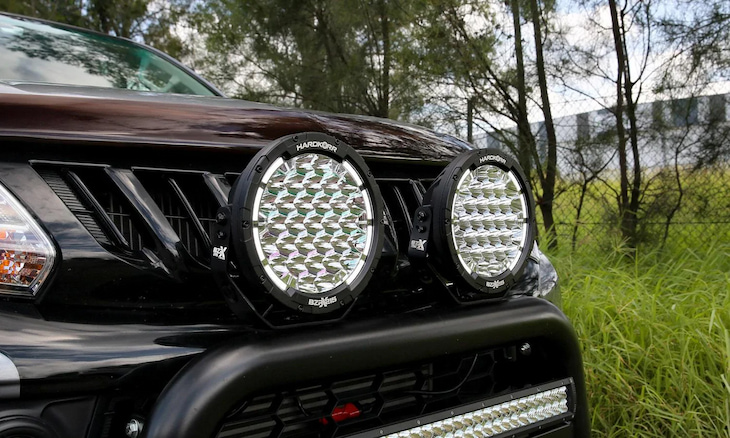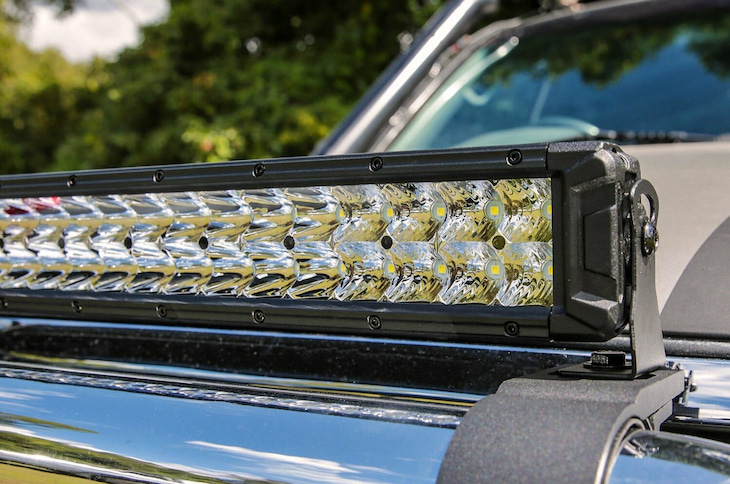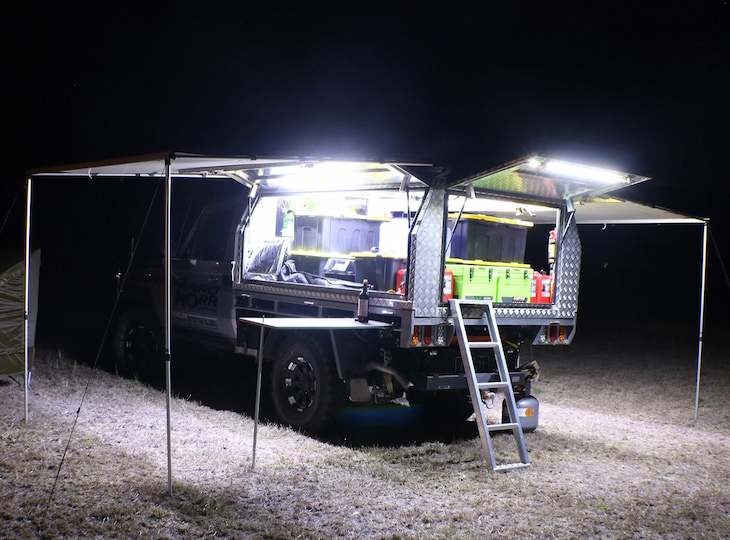One of the easiest, most practical and cost-effective upgrades in any vehicle is the addition of aftermarket lights. Drivers can also replace the old tech in headlights, rear brake lights and indicators with conversion kits to up all-round visibility and increase safety. LEDs are the go-to choice for most buyers, and these have undeniable advantages compared to everything else currently on offer.
Why LEDs?
Light-emitting diodes bring a host of benefits compared to older halogens or HID lights. They’re the newer technology we’ve all embraced in our homes, and prices have fallen considerably to the point that they are now a standard feature even in the cheapest cars. So what makes LEDs so good? If you’re in the market for the wide variety of automotive LED lighting sold Australia-wide, then read on to find out.
For starters, LEDs don’t have filaments that needed to be heated to create light. There are also no glass globes or inert gases. Instead, LEDs produce light when current passes through a series of semiconductors. The benefit is very low heat compared to almost 80 per cent generated in comparable halogens.
This brings us to the next thing going for LEDs – efficiency and durability. LEDs have fewer moving parts, generate less heat and aren’t susceptible to vibrations or impact as are halogen and HID bulbs. They’re also rated to last much longer, often putting out more than 50000 working hours, or a couple of decades, before they need replacing. Chances are that you’ll be on your second or third car, before having to swap out the lights in your first vehicle. And this brings considerable savings in both time and money.
On the efficiency front, the improved tech means less current draw. Typically, an LED with the same brightness levels as a halogen or HID bulb, requires up to 90 per cent less power. This is significant in that it won’t put additional strain on the car’s battery and electrical system already burdened by the full array of electronic gear on board. It also means that drivers won’t be worried be power use and can add any number of different types of lights in different locations on or along the vehicle for improved lighting and visibility.
Lastly, take into account performance. LEDs can get really bright. Even smaller lights and lower wattages can put out 3000 or more lumens, and enough to light your way a kilometre in the distance. This allows for smaller sizes, and a lot less space. To get as bright, halogens and HIDs need to be huge, and often present themselves as cumbersome ill-fitting eyesores. In terms of the colours they produce, LEDs are calibrated to cause the least amount of fatigue possible, even after hours of driving. Natural whites are what to look for, and light with a colour temperature ranging between 4500-5500 Kelvin, or as near as possible to midday sunlight. With fitted LEDs, there’s less strain on the eyes for drivers and oncoming traffic alike, while HIDs go for a bluish tint, and halogens on warmer reds and oranges.
Types of Aftermarket Lighting Options
Depending on where and how you’ll be using the lights, and how and where they fit on the vehicle, buyers can choose between different automotive led lighting. This includes driving lights, LED light bars, and work/ camping lights.
Driving Lights

These are the automotive LED lighting Australia solutions to poor visibility from factory headlights. They project beams that go wider and further than any stock headlight can reach. Optioned with a varying number of LEDs and in decent output, these lights get real bright. We’re talking about insane figures of almost 20000 effective lumens reaching a distance of 1100 metres. And this from a standard and compact pair of driving lights (roughly 7.5 to 8.5 inches in diameter, depending on brand and model) and not much bigger than the car’s headlights. Build quality is also on a high level, with metal outer housings, reinforced polycarbonate lens covers, and sealed wiring.
Driving lights are often mounted on or near the grille, or higher up on roof racks. They’re effectively powerful spotlights, but some versions also have additional perimeter-mounted LEDs that shine to the sides of the car, as with normal flood beams. Beam patterns can also be manipulated with the use of spot and flood filters.
LED Light Bars

While driving lights are often round or squared and fitted lower, light bars are long and rectangular and sit higher up. They’re packed with smaller but more LEDs offering a wider spread of available light at the same distances. Roof racks and the tops of bull bars are where they’re usually mounted. There’s the option of single-row light bars fitted with bigger LED arrays, or dual-row light bars packing in smaller LEDs but with more overall output.
Sizes differ, and you can get a diminutive bar in all of its 6 inches or 15cm, to huge 50-inch (125cm) offerings. Standard sizes between 22 and 27 inches (55 to 67.5cm) are the most common. Power output, brightness levels and the option of combining spot and flood beams increase as sizes get bigger. So does the price.
Many drivers fitting out 4WD rigs for serious off-roading use will have a combination of a pair of driving lights and one or two LED light bars.
Work and Camp Lights

These differ from driving light and light bars in where they’re mounted and the beams they produce. Work and camp lights are often mounted at the back of roof racks, or on rear sports bars and shine a wide flood beam at shorter distances (still over 100 metres). They also consist of fewer LEDs but ones that are rated for more power. And while driving lights and light bars in particular aren’t lacking in build, these step things up a notch or two, Work lights are built tough, able to last against high impact (think explosions for mine rated lights), vibrations, and extreme heat. Look for lights with IP ratings and ISO certification to ensure they’ll last.
What else Look for?
Besides sturdy build and quality materials, high brightness output and low power consumption, ensure that the lights are supplied with the right mounting hardware and wiring harnesses compatible with your vehicle. Mounting kits need to be of good quality to ensure that lights stay put no matter the road conditions or the speed you’re driving. In addition, wires, connectors and cabling must be sealed and simple to connect. Plug-and-play harnesses and simple vehicle-specific adaptors take out the guesswork and hassle of fitment issues. Most aftermarket lights will be hooked up to a secondary battery, while smaller configurations can be directly connected to the main vehicle battery. Controlling the lights is done with in-cabin switches. All you have to figure out is the right place.




















